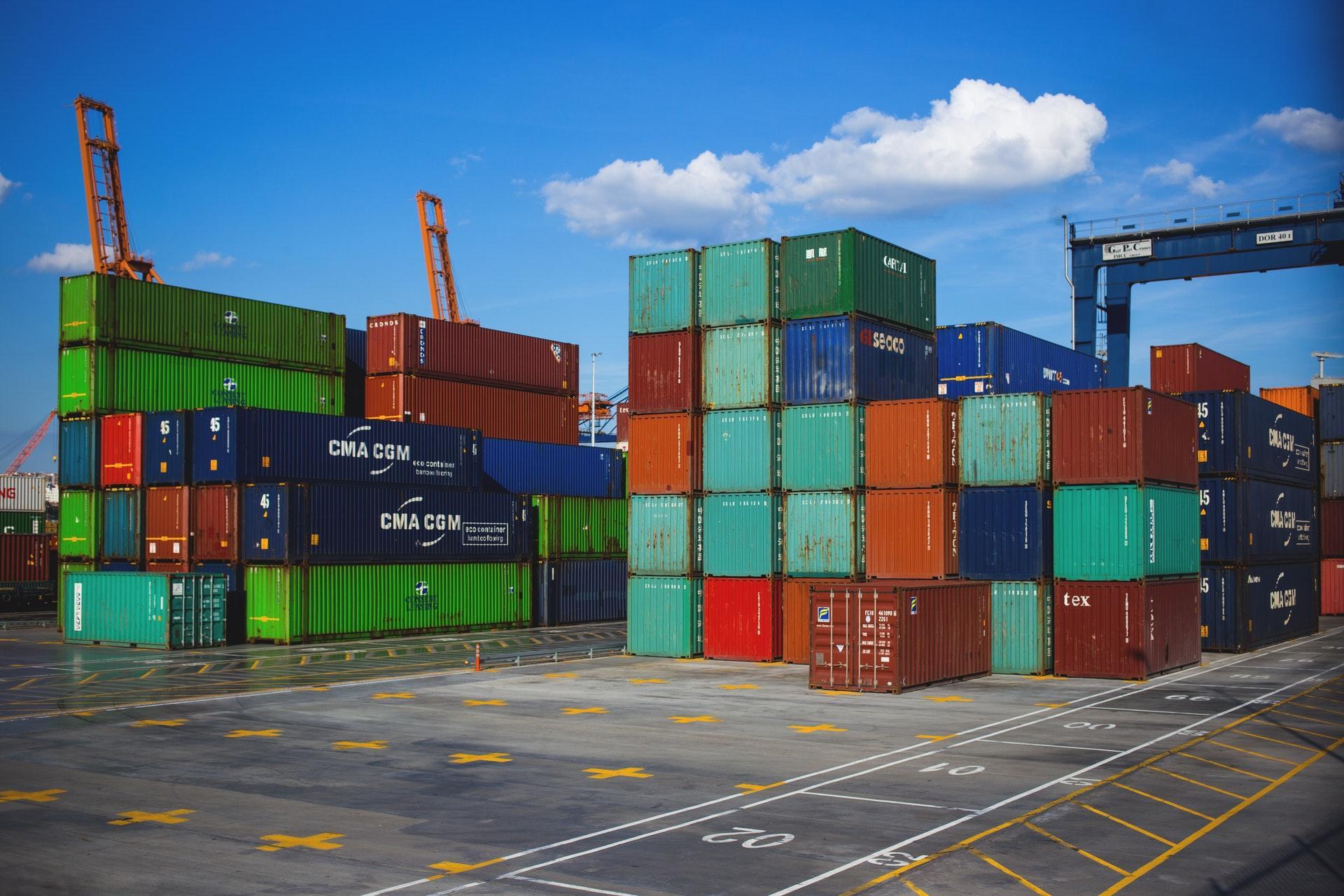The Best Ecommerce Shipping Solutions
By Rodney Laws | Ecommerce

For most ecommerce businesses, delivery of the products is the only physical contact customers will have with the online store — so it’s crucial that it goes smoothly and provides a great experience.
That’s why it’s really important to pick the best ecommerce shipping solution for your business to provide a reliable, cost-effective service.
In the guide below, we’ll be looking at some of the best ecommerce shipping providers out there, as well as ecommerce shipping best practices, how to set up shipping rates for your ecommerce business, and anything else you should know. Read on to learn more.
Before we get started, here is an overview comparison table of the best ecommerce shipping providers. We’ll be covering them in more detail further on in the guide.
| Name | Type of software | Costs (Lowest and Highest) | Features |
| Shippo | Cloud-based shipping software | -Pay as you go 5c per label -Professional $10-125/month |
-API access -Carrier discounts -Unlimited platform integrations -Shipping notification emails -Customs forms |
| ShipStation | Cloud-based shipping software + inventory management features | Starter $9 per month – 50 shipments/1 user
Enterprise $159 per month – 10,000 shipments/10 users |
-Branded labels and packing slips
-Email & community forum support |
| Veeqo | Cloud-based inventory and shipping software | Accelerator – $156 per month – 2 users Premium – $260 per month – 5 users |
-Order management -Parcel tracking -Mobile app -Branded labels and packing slips -Shipping rules |
| Shipping Easy | Cloud-based shipping and customer marketing software | Starter $0 – 50 shipments Premium $99 per month – 6,000 shipments |
-Carrier discounts -Order management -Customs forms -Shipping rules -Reporting |
| Easyship | Cloud-based ecommerce shipping software | Free – 100 shipments per month/1 user Premier – $49 per month/5 users |
-Unlimited platform integrations -Reporting -Branded automated messages and tracking – Discounted rates -Order management |
Ecommerce shipping broadly covers services designed to make it easier and more affordable to ship products to customers from online retailers.
While smaller ecommerce businesses might use regular postal services such as UPS and FedEx, as a business grows they will need to find dedicated ecommerce shipping solutions that provide a faster, more efficient way of managing their shipping.
This is where ecommerce shipping providers come in.
If you’re shipping products to customers and using an ecommerce shipping provider, you need to make sure that you — and the provider — follow best practice.
But what exactly are the ecommerce shipping best practices?
It might be tempting to hide your shipping costs until someone is about to checkout, but it’s actually just going to put them off completing their order. Be upfront about shipping costs, include them on your product pages or make them easily accessible so that shoppers can see exactly what they’re going to be spending.
Customers also want to know exactly when they can expect items to arrive, so it’s always important to show an estimated delivery date. And don’t promise a delivery date that you can’t keep — always try to get your orders there earlier than you’ve said, or provide tracking so customers can see where it is. You’ll dramatically reduce the number of customer service inquiries about orders or complaints when items don’t arrive when they are expected.
Items are bound to go missing from time to time, which is why you should use tracked delivery services as much as possible. But when there are problems, don’t mess your customers around; they don’t want to hear excuses. Apologise, track down their order, let them know what’s happened, and give them a refund or discount if necessary.
The packaging you send your products in is an important part of your ecommerce business. It’s not as simple as getting your products to customers in one piece (though this is the main priority when it comes to packaging) — it’s also an opportunity to give shoppers a good experience unwrapping their order. Packaging is a chance to market your brand.
Choose the most suitable packaging whether that’s cardboard boxes, padded or non-padded envelopes, or poly mailers, which can be more lightweight and versatile. Then consider whether you want to brand the outer packaging, how you present the items inside, and what branded materials (packing slips, flyers, offers) you can include with the order.

Image: Pexels
Many small ecommerce businesses will start off handwriting the shipping address, but it quickly becomes too time consuming, and prone to mistakes. You should look at using ecommerce shipping services that connect orders with your shipping courier so that you can automate your labeling process and print them in bulk.
When you’re setting up your ecommerce shipping policy you need to start by deciding how you are going to charge your customers:
You can either offer free shipping on all orders or you can offer it based on certain conditions. These conditions could be a minimum spend, a limited-time promotion, selected items, or shoppers can choose between free slower shipping or fast, paid shipping.
It’s important to remember that you’ll have to cover the cost of shipping somehow, so if your customers aren’t paying then you need to work that into your product prices or other costs.
If you can’t offer free shipping then one way of charging is offering customers the real-time carrier rate. You can calculate the shipping costs based on the customer’s address and the size and weight of their order. This makes shipping costs transparent for the customer — they’ll be able to see that you are just charging them what the courier charges, and you’re not gaining anything from them.
This is one of the simplest shipping rates, but it only works out well if you have products that are similar size and weight. You need to look at the average cost of shipping out your products to figure out the best flat shipping rate. However, if your orders range dramatically in size and weight then you’ll be overcharging and undercharging for shipping a lot of the time — and either you or the customer is going to lose out.
Most online shoppers now expect their orders to arrive within a few days, and a lot of people are willing to pay more for next-day delivery. Unless it’s a big bulky product or there’s high demand, customers won’t want to wait longer than a week for delivery.
It’s best to offer a range of shipping options — next day delivery at a premium, and standard shipping that can take 4-5 days. Consider the average delivery times for different couriers when you’re making a decision, and ensure that you pick someone who can reliably meet your estimated delivery times.
While shipping internationally can open you up to a much larger customer base, it can involve a lot more admin. Different countries will have different restrictions and requirements about what can be brought into the country, import taxes and duties, and customs forms.
You’ll need to have a good understanding of what products you can send where, and it’s best to work with an experienced international shipping provider to ensure everything is taken care of.

Image: Pexels
Shoppers are increasingly looking for flexibility when it comes to deliveries.
If you have a brick-and-mortar store, then it’s worth offering in-store pickup so customers can get their items quickly and you don’t have to ship them. Visiting customers may even be enticed to buy more when they come in to collect their goods.
Some couriers also offer options for customers to have their orders delivered to drop-off points to collect at a later date.
The shipping rate that your chosen carrier charges will be based on the size and weight, origin and destination, plus customs charges or duties, and insurance or tracking. Most popular carriers will provide shipping calculators so you can work out what your costs will be. You may be able to get discounts for large volumes or business accounts, depending on the service you use.
It’s also important to work out how much your packaging is going to cost — and you need to take into account the overall cost of fulfilling each product when working out shipping costs..
Add up the cost of the product, packaging, shipping, customs, and the payment processor fee to get to your total. Depending on what profit margin you’re aiming for, you can either charge the right amount for shipping or work the cost into your product price.
Ecommerce shipping software is intended to streamline your dispatch process and save you time.
It’s always best to consider what your budget is, what features are essential, and how easily it will integrate with the ecommerce platform you’re using for your store.
Here are some of the top ecommerce shipping options:
Shippo provides straightforward and easy to set up shipping automation for ecommerce businesses. They have integrations with all the main ecommerce platforms, and API access to create other integrations.
Shippo offers discounts with USPS and DHL and on insurance rates. It works on a pay-as-you-go pricing model, which means that retailers sending less than 5,000 orders per month don’t have to pay a monthly fee, just five cents plus postage for each order. For larger volumes, their subscription plans go up to $125 per month.
ShipStation is another cloud-based shipping platform that includes features such as custom views, shipping rules, and reporting tools — as well as a handy mobile app.
ShipStation integrates with most platforms you might need, as well as offering a custom integration feature.
They offer subscription plans starting at $9 per month for up to 50 orders, and they go up to unlimited shipping for $159 per month. And they also offer a discount on USPS shipping.
Veeqo is primarily an inventory management system, but it can include shipping software functionality as well. While the focus is on product and inventory management, it does integrate with most other ecommerce platforms and offers some simple reporting tools.
Because it’s not just shipping software, Veeqo is one of the more expensive options with prices starting at $156 per month. However, it could be worth investing in it if you’re considering a few different ecommerce business tools as this combines them into one.
Many ecommerce shipping solutions will offer a free plan for smaller businesses or a free trial, so when you’re starting out you can try their software without committing.
ShippingEasy is a very user-friendly, simple shipping solution that’s aimed at small to medium ecommerce retailers. If you’re shipping less than 50 orders per month, then it’s completely free. They also offer several carrier discounts and integrate with most other ecommerce platforms.
If you’re using Shopify for your ecommerce store already, then they actually include a Shopify shipping solution as part of your subscription. It doesn’t have many advanced features, but for small businesses, it’s a pretty simple solution that works well enough. They also offer discounts with a number of carriers.
If you’re running a dropshipping business — where products are sent to your customers directly from the supplier or manufacturer — then the shipping process is mostly out of your control.
However, it’s still crucial that you’re checking up on how your products are being shipped, how long they are taking, and the condition they arrive in.

Image: Pexels
Before you start dropshipping, you need to do some test orders from your suppliers and discuss with them which couriers they use, what delivery times they can offer, and the packaging that they are going to use. And once you’re up and running, keep an eye on customer feedback and reviews to check how your orders are being shipped.
If items are arriving late or damaged, you need to discuss with suppliers whether you can switch couriers or improve the packaging. Poor deliveries can very quickly ruin your ecommerce store’s reputation.
From different carriers to packaging, there’s a lot to consider when you are setting up ecommerce shipping.
One of the most important things to start with is working out the cost of shipping. You need to know how much you can charge your customers or how you can incorporate the shipping cost somewhere else to offer free shipping. After all, you don’t want to end up losing money on your shipping.
And, as your business grows, if you’re going to start using an ecommerce shipping software solution, then take advantage of free trials to find the one that works best for your online store. There’s a perfect ecommerce shipping solution out there for everyone.